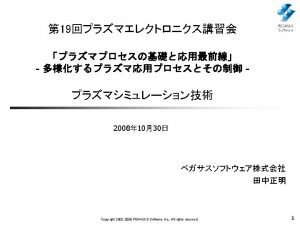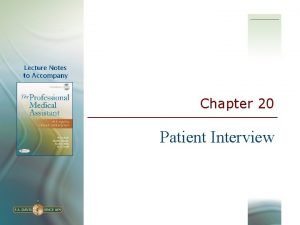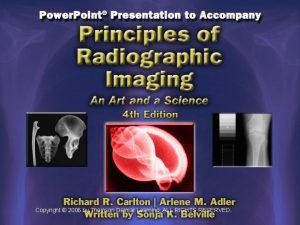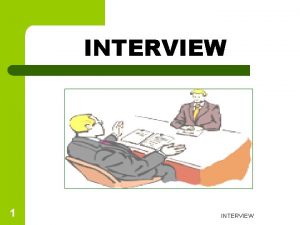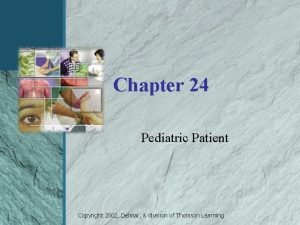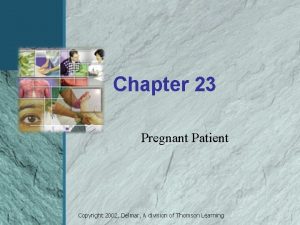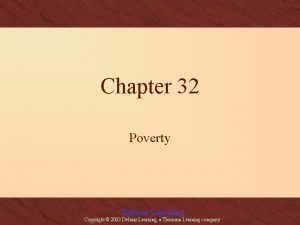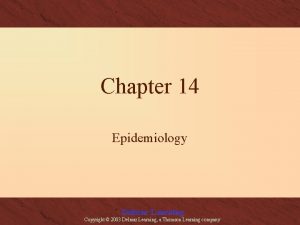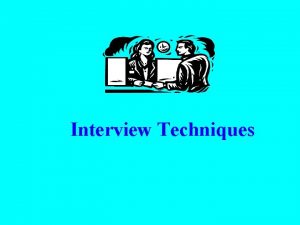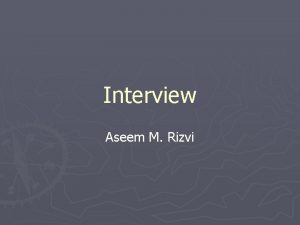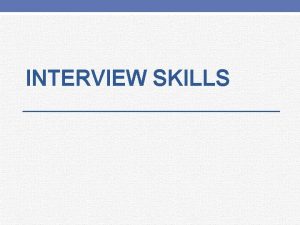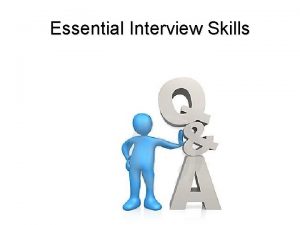Chapter 2 The Patient Interview Copyright 2002 Delmar


















- Slides: 18

Chapter 2 The Patient Interview Copyright 2002, Delmar, A division of Thomson Learning

Competencies l l l Prepare an appropriate setting for the nurse-patient interview. Recognize the personal perceptions that facilitate or hinder the interview process. Define effective interviewing techniques. (continues) Copyright 2002, Delmar, A division of Thomson Learning

Competencies l l Describe problematic interviewing behaviors. Demonstrate how to transform problematic interviewing behaviors into more effective ones. Adapt the interview process for the patient with special needs. Adapt the interview process for elderly patients. Copyright 2002, Delmar, A division of Thomson Learning

Patient Interview l Role of the nurse £ l Accepting, respectful, nonjudgmental attitude Role of the patient £ Active participant Copyright 2002, Delmar, A division of Thomson Learning

Factors Influencing the Interview l l l Approach Environment Confidentiality Time, length, duration Biases and preconceptions Copyright 2002, Delmar, A division of Thomson Learning

Stages of the Interview Process l l l Stage I — joining Stage II — working Stage III — termination Copyright 2002, Delmar, A division of Thomson Learning

Factors Affecting Communication l l Active listening Nonverbal communication Distance Personal space Copyright 2002, Delmar, A division of Thomson Learning

Effective Interviewing Techniques l Verbal techniques Open-ended questions £ Closed questions £ Facilitation £ Silence £ l Nonverbal techniques Touch £ Attentiveness £ (continues) Copyright 2002, Delmar, A division of Thomson Learning

Effective Interviewing Techniques l l Listening responses Action responses Copyright 2002, Delmar, A division of Thomson Learning

Listening Responses l l l l Making observations Restating Reflecting Clarifying Sequencing Encouraging comparisons Summarizing Interpreting Copyright 2002, Delmar, A division of Thomson Learning

Action Responses l l l l Focusing Presenting reality Confronting Informing Collaborating Limit setting Normalizing Copyright 2002, Delmar, A division of Thomson Learning

Nontherapuetic Interviewing Techniques l l l Requesting an explanation Probing Offering false reassurance Giving approval or disapproval Defending Advising Copyright 2002, Delmar, A division of Thomson Learning

Problematic Questioning Techniques l l l l Posing leading questions Interrupting the patient Engaging in talkativeness Using multiple questions Using medical jargon Being authoritative Having hidden agendas Copyright 2002, Delmar, A division of Thomson Learning

Interviewing the Patient with Special Needs l l l l Hearing impaired Visually impaired Speech impaired Aphasic Non-English speaking Illiterate Low level of understanding Copyright 2002, Delmar, A division of Thomson Learning

Tips for Using an Interpreter l l Use a trained medical interpreter. Allow time for patient and interpreter to converse prior to interview. Request interpreter translate patient replies, sentence by sentence. Allow extra time for completion of interview. (continues) Copyright 2002, Delmar, A division of Thomson Learning

Tips for Using an Interpreter l l Use brief questions. Maintain eye contact with the patient. Observe the patient’s nonverbal communication. Use preprinted questions when available. Copyright 2002, Delmar, A division of Thomson Learning

Tips for Interviewing— Special Circumstances l The patient who is Anxious and angry £ Very ill £ Sexually aggressive £ Crying £ Hostile £ Under the influence of alcohol or drugs £ Copyright 2002, Delmar, A division of Thomson Learning

Tips for Interviewing the Elderly Patient l l l Allow additional time Schedule more than one interview session Interview family or caregiver Copyright 2002, Delmar, A division of Thomson Learning
 Copyright 2002
Copyright 2002 Copyright 2002
Copyright 2002 Patient interview techniques
Patient interview techniques Patient 2 patient
Patient 2 patient 2009 delmar cengage learning
2009 delmar cengage learning 2009 delmar cengage learning
2009 delmar cengage learning Introduction to medical terminology chapter 1
Introduction to medical terminology chapter 1 Graphing tpr
Graphing tpr Delmar isotonic
Delmar isotonic Delmar tsi
Delmar tsi Delmar cargo
Delmar cargo Delmar thomson learning
Delmar thomson learning 2009 delmar cengage learning
2009 delmar cengage learning Chapter 13 medical math assignment sheet cengage learning
Chapter 13 medical math assignment sheet cengage learning Chapter 10 cultural diversity
Chapter 10 cultural diversity Delmar larsen
Delmar larsen Delmar cengage learning instructor resources
Delmar cengage learning instructor resources Hát kết hợp bộ gõ cơ thể
Hát kết hợp bộ gõ cơ thể
